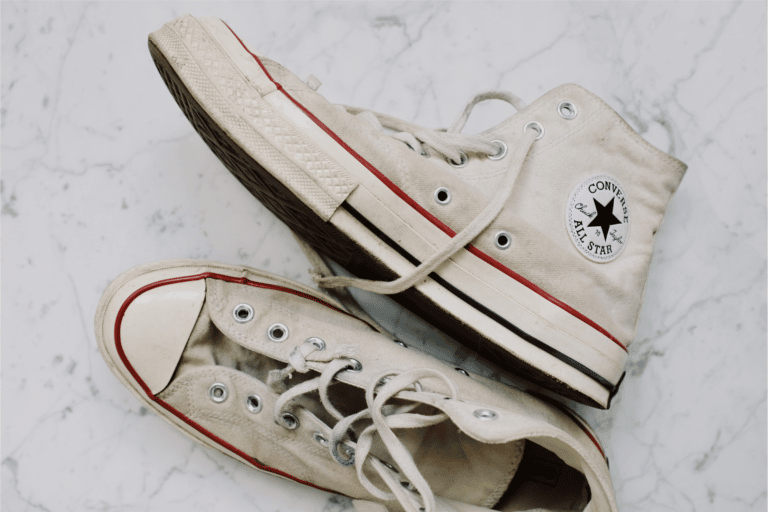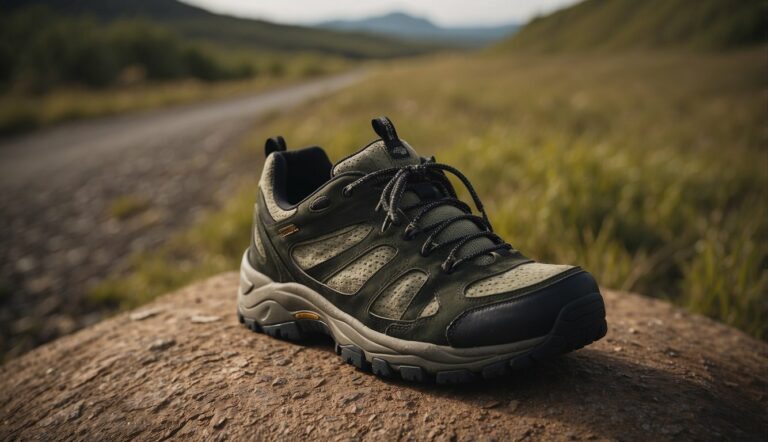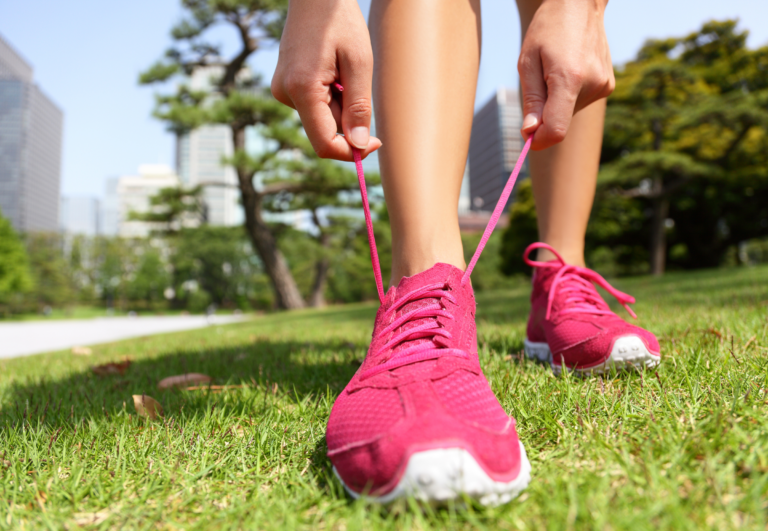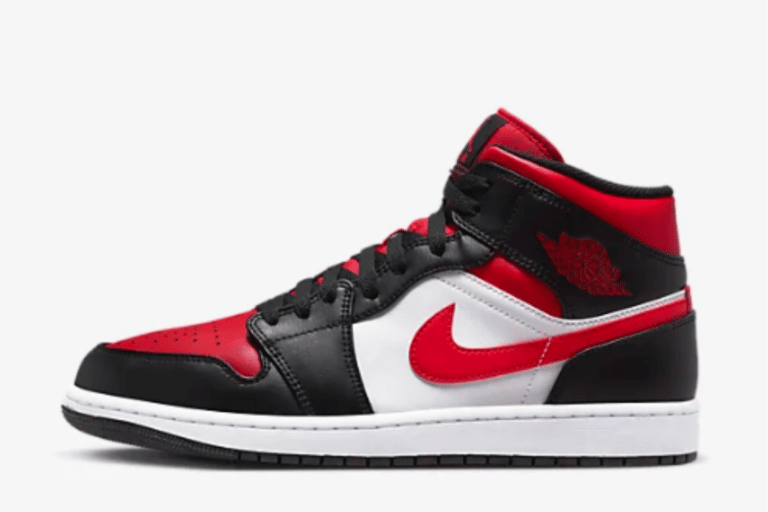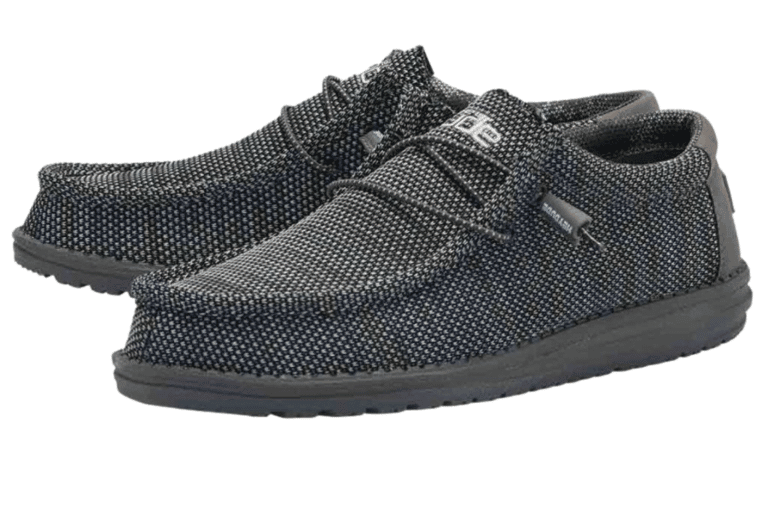18 Questions to Ask When Buying Running Shoes at the Store (And Counting!)
When selecting running shoes, it’s crucial to consider your unique needs and preferences. Ask about the type of surface you’ll be running on to ensure proper tread and cushioning. Discuss your weekly mileage to determine the shoe’s required durability. Understand your foot type and arch height for appropriate support.
Address any gait issues to find shoes with suitable stability or motion control. Identify what you need in terms of cushioning, insoles, heel-to-toe drop, and flexibility to enhance your running experience. Ensure a proper fit by trying various sizes and confirm the shoe’s weight aligns with your performance goals.
Always test the shoes in conditions similar to your runs, inquire about the return policy, and understand the expected lifespan of the shoes to prepare for future replacements. Consider seasonal models for year-round running and be aware that different colorways may indicate different materials.
18 Questions To Ask at the Store When Buying Running Shoes
When looking for running shoes, it’s essential to ask the right questions to ensure you get the best fit and support.
Here’s what to inquire about:
Question 1: Can you analyze my gait and running form?
When shopping for running shoes, the first thing you might want to inquire about is whether the store offers gait analysis. Gait analysis is crucial because it helps identify your running pattern and foot type.
- Why it’s Important: The way your foot strikes the ground has a big impact on which shoe will work best for you. For example, if you have a pronated foot motion, certain shoes can help correct this and prevent injury.
- Information to Glean: You’re looking to understand your foot strike and arch height. This will guide the store associate to recommend shoes that offer the right level of support and cushioning.
Here’s a simple breakdown of what you’d hope to learn:
| Aspect of Gait | Details |
|---|---|
| Foot Strike | Position of foot contact with ground (heel, midfoot, forefoot) |
| Arch Type | Height of your arch (flat, neutral, high) |
| Pronation | Inward rolling of the foot during foot landing |
By asking about gait and running form analysis, you ensure that the suggested shoes complement your natural movement. Not all stores may have the technology for a detailed analysis, but a knowledgeable staff member should be able to observe your run and provide useful insights.
Question 2: What type of arch support do these shoes provide?
When shopping for running shoes, it’s essential to ask about arch support. The right arch support can enhance comfort, improve your running form, and reduce the risk of injury.
Your feet’s arches play a pivotal role in shock absorption and stabilizing your movements during runs.
- Flat arches may require stabilizing shoes to prevent overpronation.
- Normal arches often work well with neutral shoes that offer moderate support.
- High arches might need cushioned shoes with additional arch support to help with shock dispersion.
Here’s a simple checklist you can use to determine if the shoes fit your arch type:
| Arch Type | Shoe Feature to Look For |
|---|---|
| Flat | Structured cushioning |
| Neutral | Balanced support |
| High | Enhanced arch cushioning |
Always try on shoes to feel their support firsthand. The shoe specialist at the store can help you identify which models provide the necessary arch support for your foot type.
Question 3: How do these shoes accommodate my foot shape and size?

When searching for the ideal running shoes, it’s crucial to consider not just the length, but also the width and overall shape of your foot.
Each person’s feet have unique characteristics, which means a shoe that fits well for one individual may not suit another—even if they are technically the same size.
Here are some key factors you should look for:
- Length: There should be about a thumb’s width of space between your longest toe and the end of the shoe. This ensures that your toes have room to move without being cramped, reducing the risk of blisters or toenail damage.
- Width: Your foot should not feel pinched on the sides. Adequate space is necessary for foot expansion during a run.
- Foot Shape: The shape of the shoe should mimic the natural silhouette of your foot. If your foot tends to be wider at the toes, look for a shoe with a wider toe box.
- Arch Support: The arch of your foot should be comfortably supported by the shoe, which can promote proper alignment and reduce fatigue.
Use this brief table to assess shoe fit:
| Aspect | What to Check | Ideal Fit |
|---|---|---|
| Toe Room | Thumb’s width of space | Enough room to move toes |
| Width | No pinching | Foot sits naturally, not forced |
| Shape | Resembles foot contour | Matches curve of your foot |
| Arch Alignment | Snug, supportive fit | Supports without overcorrecting |
By asking these questions, you’re looking to ensure that the shoe accommodates the uniqueness of your foot, potentially preventing discomfort and injury.
Remember that sizes can vary between brands, so focusing solely on the numerical size can be misleading. Instead, aim for a personalized fit that accounts for all dimensions of your foot.
Question 4: Based on my mileage and running terrain, which shoes would you recommend?
When selecting running shoes, it’s imperative to consider your weekly running mileage and the types of surfaces you’ll be traversing.
- Mileage: Your shoes should accommodate the distance you plan to cover weekly. Durability varies, and certain models are designed for higher mileage. For instance, if you’re training for a marathon, you would want a shoe that can hold up throughout intensive training and the event itself. Weekly Mileage Shoe Durability 20+ miles 4-6 months 40+ miles 2-3 months
- Terrain: Different shoes excel on varied terrains. Road running shoes might offer more cushioning for pavements, while trail shoes provide extra grip for off-road routes. Terrain Shoe Feature Road Cushioned Trail Grippy
Ask about the specific shoe models that handle your expected mileage and terrain efficiently.
Question 5: What is the heel-to-toe drop of these shoes, and how does it affect my running?

When you’re in the store browsing through running shoes, heel-to-toe drop is a key feature you’ll want to ask about. It’s the difference in height between the heel and the forefoot of the shoe. This measurement can influence your running mechanics, how your foot strikes the ground, and can potentially affect the stress on different parts of your leg.
- Low Drop (0-6mm): Closer to the ground for a more natural feeling, could be better for forefoot strikers.
- High Drop (8+mm): Traditional build which can be more comfortable for heel strikers or runners with certain types of foot conditions.
| Heel-to-Toe Drop | Potential Benefits |
|---|---|
| Low (0-6mm) | May promote a natural running position; often preferred by more experienced runners looking for a ‘barefoot’ experience. |
| Mid (5-8mm) | Balances between natural positioning and cushioning. |
| High (8+mm) | Can cushion impact better, potentially reducing strain on the joints for heel strikers or those with specific foot issues. |
Understanding the heel-to-toe drop helps you find a shoe that compliments your running style. For example, if you’re a forefoot striker, you might prefer a shoe with a lower drop. On the other hand, if you find that you’re experiencing knee or hip discomfort with your current shoes, it could be worth trying a shoe with a higher drop.
Question 6: How much cushioning do these shoes have, and what type of cushioning technology is used?

Cushioning in running shoes is a key factor that contributes to the comfort and impact protection of your feet during a run. When you’re at the store, ask about the level of cushioning the footwear offers.
This can range from minimal to maximal, each providing a different running experience. The amount of cushioning you need might depend on factors like your running style, distance, and personal preference for ground feel versus plush comfort.
Types of Cushioning Technology:
- EVA Foam: Soft, lightweight, and a common choice, ideal for a balanced feel.
- Polyurethane: Denser and more durable, offering stability.
- Gel: Absorbs shock effectively, often found in specific zones of the shoe.
- Air: Encapsulated air pockets provide a responsive cushion.
You’ll want to know the specific cushioning technology employed in the shoes because it can affect durability, responsiveness, and the overall feel underfoot. Brands like HOKA ONE ONE and Nike have developed their own proprietary cushioning systems, such as HOKA’s oversized midsoles and Nike’s Air Zoom units, which can dramatically influence performance and comfort.
Ask for a demonstration or a description of how these technologies work in practice. For instance, the HOKA ONE ONE Bondi features a full EVA midsole for a signature soft ride, while the Nike Air Zoom Pegasus integrates airbags for a bouncy, energized run.
Question 7: Can you suggest any shoes for my specific running goals or upcoming races?
When you’re eyeing a particular race or have a specific running goal, it’s crucial to communicate this at the store. The right shoes can enhance your performance and match the demands of the race distance or terrain.
For example, if you’re preparing for a marathon, you’ll need shoes with exceptional endurance and cushioning.
- Short-Distance Races: Look for lightweight shoes that offer a responsive feel.
- Long-Distance Running: Prioritize cushioning and support for enduring those miles.
- Trail Races: Seek out shoes with aggressive traction and sturdy protection.
Here’s a simple guide on what to consider:
| Goal/Race | Key Shoe Features |
|---|---|
| 5K/10K | Lightweight, responsive |
| Marathon | Supportive, well-cushioned |
| Trail | Extra traction, durable |
Ask the store assistant for models that align with these specifications. They will use their expertise to provide options that cater to your requirements. Getting their suggestions helps you focus on choices that complement your training and racing, ensuring a more tailored fit and better running experience.
Question 8: How should running shoes fit in terms of toe room and overall snugness?

When trying on running shoes, it’s important to focus on toe room and snugness. Your toes need space to move and flex without feeling cramped. A good rule is to have a thumb’s width between your longest toe and the shoe’s end. This space helps prevent bruising, especially on downhill routes.
Toe Room
- Allow for at least 1/2 to 1 inch of space
- Check by pressing down on the shoe over your longest toe; you should be able to feel the room
For snugness, shoes should feel secure but not overly tight. They must anchor your foot to prevent unnecessary movement that can lead to blisters or instability. You should be able to lace them comfortably without cutting into the top of your foot.
Snugness Checklist
- Heels remain in place as you walk or run
- Midfoot feels secure, not squeezed
- Enough room to wiggle toes without sliding forward
Question 9: What’s the Expected Lifespan of These Running Shoes?

When shopping for running shoes, asking about their expected lifespan is a savvy move. You want to manage your expectations for durability and get the most from your investment. The lifespan of running shoes typically depends on how many miles you can log on them before they need replacement.
- Mileage: Running shoes are usually designed to withstand 300 to 500 miles of use. It’s important for you to understand this because the durability of your shoes directly relates to how often you’ll have to replace them.
| Running Volume per Week | Estimated Lifespan |
|---|---|
| 20 miles | Approximately 4-6 months |
| Less frequent running | Potentially longer |
| Marathon training | Possibly shorter |
- Timeframe: If you don’t measure your running by miles, consider that running shoes often last three to six months if you run regularly.
- Use Patterns: Your running habits can affect these numbers. For example, if you’re a casual runner, your shoes may outlast this range. Intense training may shorten it.
By understanding the lifespan of the shoes you’re considering, you’re better equipped to choose a pair that suits your running routine and budget.
Question 10: What is your return policy if the shoes don’t work out after a few runs?

When buying new running shoes, it’s crucial to inquire about the return policy. This question is important because even if the shoes feel comfortable at first, they might not be the right fit after you take them for a few runs.
A good return policy can save you from being stuck with shoes that cause discomfort or even injuries, such as blisters.
Look for policies that allow you to return shoes after they’ve been used for a short period. Here’s what you should aim to find out:
- Duration: How many days do you have to return the shoes?
- Condition: Can the shoes be returned after they’ve been worn outside?
- Proof of Purchase: Do you need to keep your receipt or tags?
| Return Policy Aspect | Details to Confirm |
|---|---|
| Time Limit | Typically, 30 to 90 days, but it varies by store and brand. |
| Usage | Some stores allow returns even if the shoes have been used, others do not. |
| Original Packaging | Is it necessary to keep the box and receipt? |
| Refund vs. Store Credit | Will you get a refund, or must you choose another item? |
Remember to choose stores that offer customer-friendly return policies. Some brands, like Nike, may offer a 60-day return period, allowing ample time to test your shoes.
Question 11: How do these shoes perform in different weather conditions?

When you’re shopping for running shoes, you want a pair that can cope with the unpredictability of nature. Asking about performance in various weather conditions ensures you won’t be caught off guard when the weather changes.
In dry conditions, look for:
- Breathability: A shoe with good air flow keeps your feet dry and comfortable.
- Traction: Ensure the outsole can handle hot, possibly slick pavement.
For wet and rainy weather, prioritize:
- Water resistance: A water-repellent upper helps keep your feet dry.
- Grip: Outsoles designed to maintain traction on wet surfaces are essential.
Cold and snowy climates call for:
- Insulation: Keeps your feet warm in freezing temperatures.
- Studded or textured outsoles: Offers stability on snow and ice.
You can also check if the shoes have a rock plate or other features to protect against rough terrain that could be hidden by snow or leaves. Stability in footwear is important when encountering hidden rocks, roots, or uneven ground.
Here’s a brief list of features to consider:
| Weather Condition | Features to Consider |
|---|---|
| Dry | Breathability, Traction |
| Wet/Rainy | Water resistance, Grip |
| Cold/Snowy | Insulation, Studded/Textured outsoles |
Remember to think about where you’ll be running and the seasons you’ll face. Your ideal shoe may vary from well-aerated designs for those hot summer runs to insulated models for the winter warrior in you.
Question 13: Are there specific insoles or orthotics that you recommend with these shoes?
When choosing running shoes, it’s essential to consider the insoles or orthotics that could enhance your comfort and support. Insoles play a critical role in cushioning and supporting your feet, which can prevent injuries and improve your running performance.
Ask about recommended insoles or orthotics because they can:
- Offer better arch support to match your foot type.
- Provide added cushioning where you need it most.
- Aid in correcting foot alignment, thereby minimizing pain.
Your goal is to find out if there are insoles designed to complement the shoes you’re considering. Some shoes may not require additional insoles, especially if they come equipped with adequate support.
Types of Insoles:
- Cushioned insoles for extra comfort
- Structured orthotics to correct foot alignment
Note: Shoes labeled as ‘stability shoes’ may not need extra inserts, as they already provide significant support.
Features to Consider:
- Material: For durability and breathability.
- Design: To ensure compatibility with your shoe style.
- Purpose: Whether for everyday running or specific conditions, like plantar fasciitis.
Remember, the right insole can make a considerable difference in your run. Do not hesitate to seek personalized advice to identify the insole that suits your needs perfectly.
Question 14: How do these shoes compare to my current/previous pair?

When you’re shopping for new running shoes, it’s important to assess how they stack up against the pair you currently use. This comparison can offer valuable insights into potential improvements or unwelcome changes in your running experience.
Fit and Comfort:
- Does the toe box offer more or less room?
- Is the cushioning firmer or softer?
- Are there noticeable changes in arch support?
Performance:
- Inquire about the differences in technology or design.
- Is there a new inclusion of a carbon plate for speed?
- How might the weight difference impact your run?
Durability:
- Ask for an estimation of the mileage you can expect.
- Compare the outsole material and tread pattern.
By asking these questions, you’ll have a clearer understanding of whether the new pair advances your running goals.
Question 18: Do these shoes have any special features for specific conditions, like overpronation or supination?

When you’re shopping for running shoes, it’s crucial to consider if you need features that address foot motion issues such as overpronation or supination. Overpronation is when your ankles tilt inward too much during your stride, while supination means your ankles roll outward.
Special Shoe Features for Overpronation:
- Stability shoes: These have a firm midsole on the arch side to prevent excessive inward roll.
- Motion control shoes: Designed with a more rigid heel and a straight-last for maximum control and to limit pronation.
Special Shoe Features for Supination:
- Cushioned shoes: Typically have a softer midsole and more flexibility to encourage natural foot motion.
| Condition | Feature | Benefit |
|---|---|---|
| Overpronation | Stability and motion control | Reduces risk of injury by preventing excessive inward foot roll. |
| Supination | Cushioning and flexibility | Encourages natural foot movement and absorbs impact. |
By asking about these features, you’ll ensure the shoes you’re considering will support your individual gait and potentially prevent discomfort or injury. Not all running shoes are made equal, and those designed for specific foot motions can make a world of difference in your running experience.


